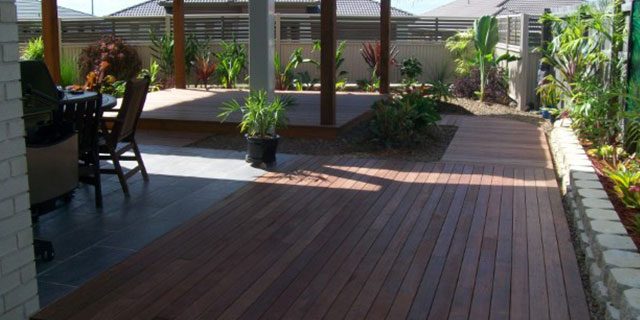Wood Vs Composite Decking – Which Works Better?

However, let’s examine the details between both wood and composite decking’s and ultimately give you an overview on which one to choose for your new Gazebo, Patio or Pavilion.
Here Diverse Gazebos and Decks will teach you:
- The differences and similarities between wood and composite deck platforms.
- The cost factor and maintenance efforts put into both types
of decking. - What’s next after you make your choice
- Diverse Gazebos and Decks can give you a hand in deck building, with both wood and composite materials.
Wood Decking
Wood decking made from natural and high-quality materials withstands the test of time. If your goals are long-term, then a wooden deck will be a great choice.
Expenses
The budget you need for a woodwork deck project varies from softwood to hardwood. Choose the best softwood timber according to affordability, colour and installation method. No pre-drilling is necessary, neither any kind of budget-soaring hidden fastening installations.
Pine softwood decks go in the price range between 120 to 140 per square metre.
Cedar also happens to be softwood but it’s out of the cheap range of products. It ranges between 160 to 180 per square metre. Make sure that the screws are made of stainless steel – otherwise other metals might react in an unpleasant way with the cedar and leave black spots.
Don’t expect any cheap options when it comes to hardwood decking. It is one of the most common decking materials, as it is durable, but there are other options, such as Merbau.
The Australian standard for wood and wood-based products durability consists of 5 classes:
- I – high durability
- II – durability
- III – moderate durability
- IV – low durability
- V – no durability
A hardwood decking should have class 1 – otherwise it’s not worth the money and its maintenance costs will very soon outpass the initial investment.
With installation methods varying, the most popular one is using pre-drilled boards. One of the cheapest hardwood materials, pre-drilled and with basic design, will cost anywhere between 190 and 220 per square meter.
Maintenance
Wood decks of lower quality such as treated pine can withstand climate changes.
If the wood absorbs moisture quickly, then it will need to be sealed and stained. You can check if that’s the case by pouring a bit of water on top. If it remains on the surface, you can still postpone. Seal and stain the wood deck once every couple of years. If the surface gets dirty in the middle of this time, then use a non-abrasive cleaner to polish the wood but nothing too harsh. You can always refer to Diverse Gazebos and Decks who have enough experience to handle this troublesome task.
Composite Decking
Source: Wiki License: CC SA 4.0
Composite decking panels are already a popular decking type. They contain wooden starch and plastic (polypropylene). This material is well-established in practice as it looks stylish – it’s not easy to distinguish between composite and natural wood at first sight. This is due to the fact that the better part of the composite mixture (around 60 to 80%) is made of pieces of wood. The rest of it is reserved for compounds, such as polyethylene, UV-stabilisers, pigments and so on. Therefore, this type of material is also known as WPC – wood polymer composite.
Expenses
The price of the decking heavily depends on the different manufacturer, as well as the material, shape and complexity.
Maintenance
Nowadays, decking designers love the composite decks and apply it to form terraces, porches, alleys, children playgrounds, outdoor areas, and pools. Of course, the main disadvantage of the composite wood is that it’s not entirely a natural product. However, looking at the fact that you are surrounded by plastic – from the electric appliances to your toothbrush – you won’t be able to move to an environment where you’re living with natural materials ONLY. Furthermore, thanks to the polymer compounds inside the boards, several qualities that are highly sought after come into play:
- Water and radiation resistance;
- Resistant to some biological threats (bacteria, insects, rodents), but not mould;
- Durable to mechanical pressure;
- Resistant to different cleaning chemicals;
- Temperature resistant (between -60 to +80 °C).
Some composite manufacturers set a very long expiry date on their products – up to 50 years. Another comfortable benefit is this material doesn’t require periodical grinding or painting of the surface. The composite boards can be both hollow or solid, with hollow being of lesser quality – holding moisture leads to warping and deconstruction of the material. Solid composite resembles natural wood the most.
Despite the above given qualities, contrary to some outdated advertising, composite decks are not maintenance free. Mould and pollen are their natural enemies. In order to lower the damage, always pick cleaning detergents that are specifically made for composite materials – otherwise, there’s a risk to fade the colour of the deck.




